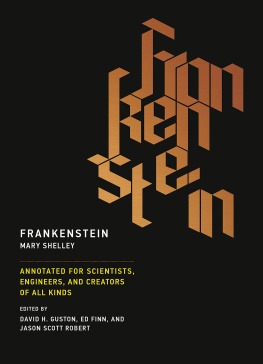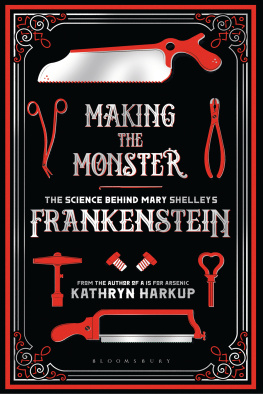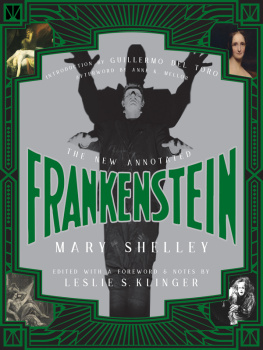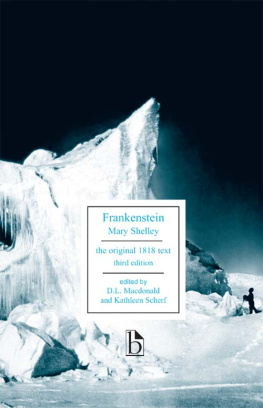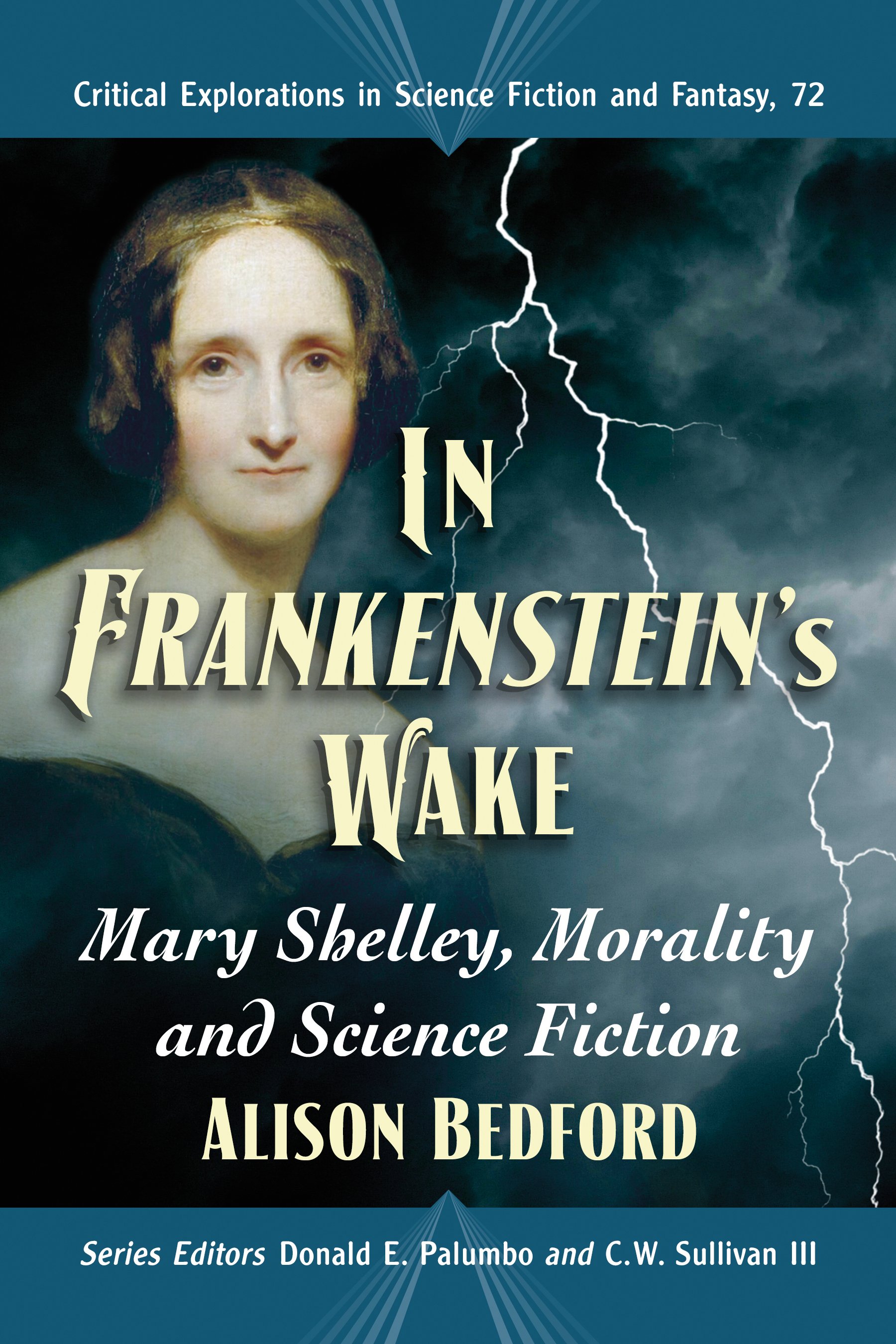In Frankenstein s Wake
Critical Explorations in Science Fiction and Fantasy
(a series edited by Donald E. Palumbo and C.W. Sullivan III)
Earlier Works: www.mcfarlandpub.com
Recent Works : Gender and the Quest in British Science Fiction Television: An Analysis of Doctor Who, Blakes 7, Red Dwarf and Torchwood (Tom Powers, 2016)
Saving the World Through Science Fiction: James Gunn, Writer, Teacher and Scholar (Michael R. Page, 2017)
Wells Meets Deleuze: The Scientific Romances Reconsidered (Michael Starr, 2017)
Science Fiction and Futurism: Their Terms and Ideas (Ace G. Pilkington, 2017)
Science Fiction in Classic Rock: Musical Explorations of Space, Technology and the Imagination, 19671982 (Robert McParland, 2017)
Patricia A. McKillip and the Art of Fantasy World-Building (Audrey Isabel Taylor, 2017)
The Fabulous Journeys of Alice and Pinocchio: Exploring Their Parallel Worlds (Laura Tosi with Peter Hunt, 2018)
A Dune Companion: Characters, Places and Terms in Frank Herberts Original Six Novels (Donald E. Palumbo, 2018)
Fantasy Literature and Christianity: A Study of the Mistborn, Coldfire, Fionavar Tapestry and Chronicles of Thomas Covenant Series (Weronika aszkiewicz, 2018)
The British Comic Invasion: Alan Moore, Warren Ellis, Grant Morrison and the Evolution of the American Style (Jochen Ecke, 2019)
The Archive Incarnate: The Embodiment and Transmission of Knowledge in Science Fiction (Joseph Hurtgen, 2018)
Womens Space: Essays on Female Characters in the 21st Century Science Fiction Western (ed. Melanie A. Marotta, 2019)
Hailing frequencies open: Communication in Star Trek : The Next Generation (Thomas D. Parham III, 2019)
The Global Vampire: Essays on the Undead in Popular Culture Around the World (ed. Cait Coker, 2019)
Philip K. Dick: Essays of the Here and Now (ed. David Sandner, 2019)
Michael Bishop and the Persistence of Wonder: A Critical Study of the Writings (Joe Sanders, 2020)
Caitln R. Kiernan: A Critical Study of Her Dark Fiction (James Goho, 2020)
In Frankenstein s Wake: Mary Shelley, Morality and Science Fiction (Alison Bedford, 2020)
The Fortean Influence on Science Fiction: Charles Fort and the Evolution of the Genre (Tanner F. Boyle, 2020)
Arab and Muslim Science Fiction ( Hosan Elzembely and Emad El-Din Aysha, 2020)
The Mythopoeic Code of Tolkien: A Christian Platonic Reading of the Legendarium (Jyrki Korpua, 2021)
The Truth of Monsters: Coming of Age with Fantastic Media (Ildik Limpr, 2021)
In Frankenstein s Wake
Mary Shelley, Morality and Science Fiction
Alison Bedford
Critical Explorations in Science Fiction and Fantasy, 72
Series Editors Donald E. Palumbo and C.W. Sullivan III

McFarland & Company, Inc., Publishers
Jefferson, North Carolina
Library of Congress Cataloguing-in-Publication Data
Names: Bedford, Alison, 1983 author.
Title: In Frankensteins wake : Mary Shelley, morality and science fiction / Alison Bedford.
Description: Jefferson, North Carolina : McFarland & Company, Inc.,
Publishers, 2021 | Series: Critical explorations in science fiction
and fantasy ; 72 | Includes bibliographical references and index.
Identifiers: LCCN 2020050718 | ISBN 9781476677804 (paperback : acid free paper)
ISBN 9781476641539 (ebook)
Subjects: LCSH: Shelley, Mary Wollstonecraft, 17971851Criticism and
interpretation. | Shelley, Mary Wollstonecraft, 17971851Influence. |
Science fictionHistory and criticism. | Literature and morals. |
Frankensteins Monster (Fictitious character) | Shelley, Mary
Wollstonecraft, 17971851. Frankenstein.
Classification: LCC PR5398 .B44 2021 | DDC 823/.7dc23
LC record available at https://lccn.loc.gov/2020050718
British Library cataloguing data are available
ISBN (print) 978-1-4766-7780-4
ISBN (ebook) 978-1-4766-4153-9
2021 Alison Bedford. All rights reserved
No part of this book may be reproduced or transmitted in any form or by any means, electronic or mechanical, including photocopying or recording, or by any information storage and retrieval system, without permission in writing from the publisher.
Front cover: Portrait of Mary Shelley by Richard Rothwell, 1840 (National Portrait Gallery, London)
Printed in the United States of America
McFarland & Company, Inc., Publishers
Box 611, Jefferson, North Carolina 28640
www.mcfarlandpub.com
Acknowledgments
I would like to acknowledge the staff of the School of Arts and Communication at the University of Southern Queensland for their support of my doctoral studies. This work was completed with the support of the Australian Commonwealth Government contribution through the Research Training Scheme (RTS).
Thank you also to The Glennie School, Too-woomba, which has supported me in my studies as I have continued to teach. Special thanks also to my colleague Tina Tilden, who created many of the images used in this book.
My most sincere gratitude goes to my doctoral supervisors, Laurie Johnson and Jessica Gildersleeve, for their advice, guidance and support; for encouraging me to seek opportunities for publication; and for their patience as I found my own academic voice.
To the peer reviewers and editorial team at McFarland, especially Susan Kilby, thank you for expert advice to further improve the work.
Finally, thank you to friends and family who have helped in many ways. A special thank you for the love and support of Linda and ThomasI couldnt have done this without you.
Contents
Preface
More than two centuries ago Frankenstein: Or, The Modern Prometheus was first published, and the bicentennial in 2018 revealed a renewed interest in Mary Shelley and her most famous novel. Like many people, I traversed the Mer de Glace with Victor Frankenstein in my teens, feeling empathy for the eloquent yet repugnant Creature who is so neglected by his creator. Like many more people, I also encountered the Creature (often erroneously named Frankenstein) in film, television, comics and other forms of popular culture. Yet, as other scholars have highlighted, this pop culture figure is not the one that walks the pages of Shelleys debut novel. Rather than the rational and feeling creature of the 1818 text, the pop culture Creature is a shambling mute, green-skinned and animal-like. This misrepresentation of Shelleys character has become an iconic symbol of science gone wrong and the dangers of playing God. I am interested in the debate that surrounds Shelleys work as science fiction; in exploring the role Shelleys works played in the formation of the genre; and, more importantly, in the role they played in forming the discourse that underpins science fiction. This revaluation of Shelleys contribution to literature and culture offers a new perspective on the beginnings of science fiction and its role in our culture.
In Frankenstein s Wake: Mary Shelley, Morality and Science Fiction builds upon the strong biographical scholarship on Mary Shelley to consider the conditions and circumstances that allowed her to write what Brian Aldiss labels the first real novel of science fiction (30), Frankenstein . While this generic categorization remains contentious, my work draws upon Michel Foucaults concept of discourse and the language of archaeology and geology that he uses throughout An Archaeology of Knowledge (1990) and The Order of Things (1973) to build an understanding of culture as a fluid phenomenon and hence one in which we can trace the ripples of impact caused by the publication of Shelleys novel. My close reading of Frankenstein explores the major themes of curiosity, education, family, and responsibility to reveal Shelleys position, concluding that she offered fractured mirrorings of each in the three-part narrative of the novel. These ambiguous representations, where none are given clear primacy over the others, are the hallmark of the novel and ultimately establish the moral space for readers to make their own decisions about the potentials of new science.





